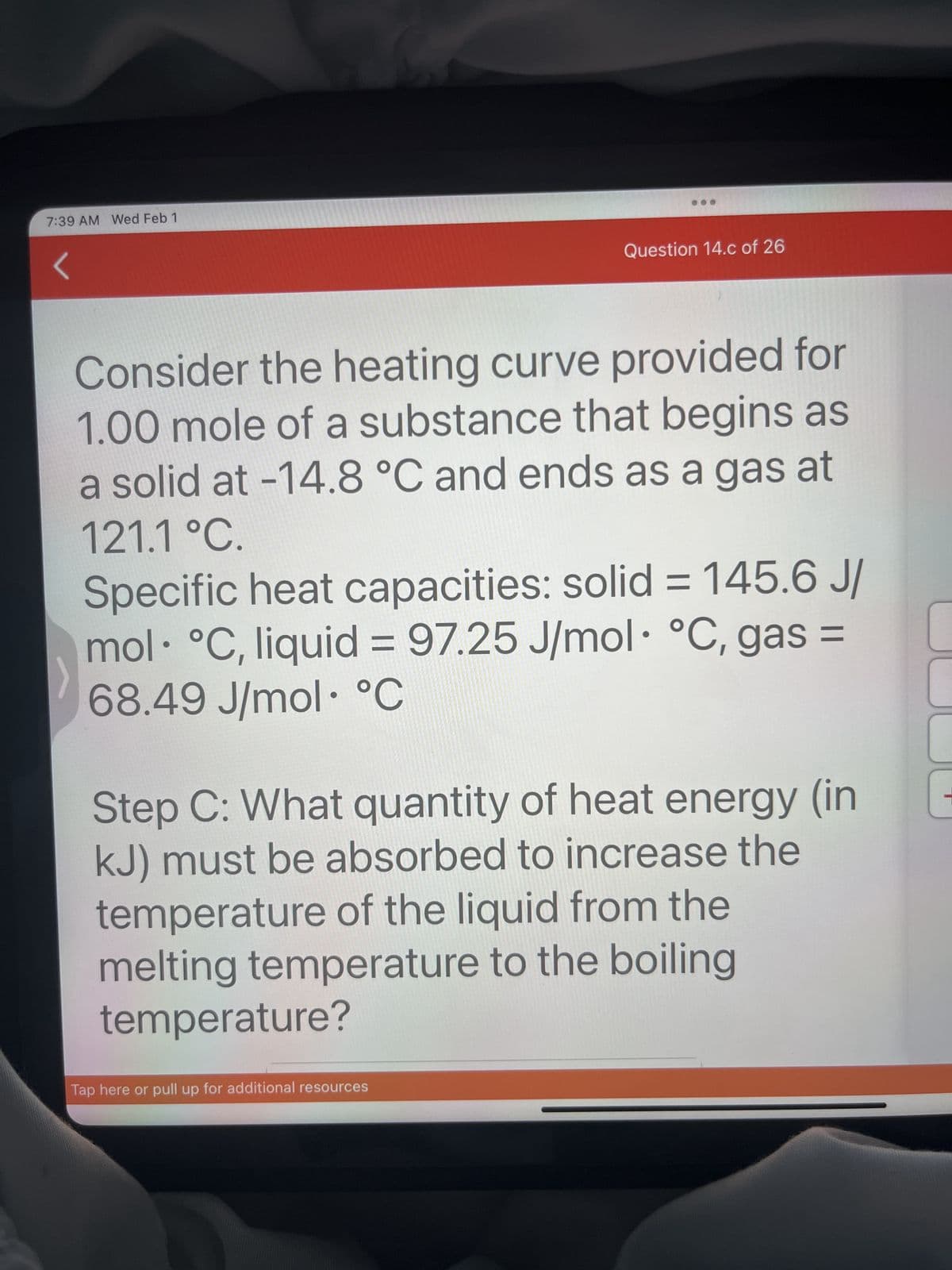Consider the heating curve provided for 1.00 mole of a substance that begins as a solid at -14.8 °C and ends as a gas at 121.1 °C. Specific heat capacities: solid = 145.6 J/ mol °C, liquid = 97.25 J/mol °C, gas = 68.49 J/mol °C Step C: What quantity of heat energy (in kJ) must be absorbed to increase the temperature of the liquid from the melting temperature to the boiling temperature?
States of Matter
The substance that constitutes everything in the universe is known as matter. Matter comprises atoms which in turn are composed of electrons, protons, and neutrons. Different atoms combine together to give rise to molecules that act as a foundation for all kinds of substances. There are five states of matter based on their energies of attraction, namely solid, liquid, gases, plasma, and BEC (Bose-Einstein condensates).
Chemical Reactions and Equations
When a chemical species is transformed into another chemical species it is said to have undergone a chemical reaction. It consists of breaking existing bonds and forming new bonds by changing the position of electrons. These reactions are best explained using a chemical equation.

The specific heat capacity of the liquid is 97.25 J/g.oC, which states that 97.25 J of heat energy will be required to increase the temperature of 1 mol of liquid by 1oC.
Trending now
This is a popular solution!
Step by step
Solved in 3 steps









